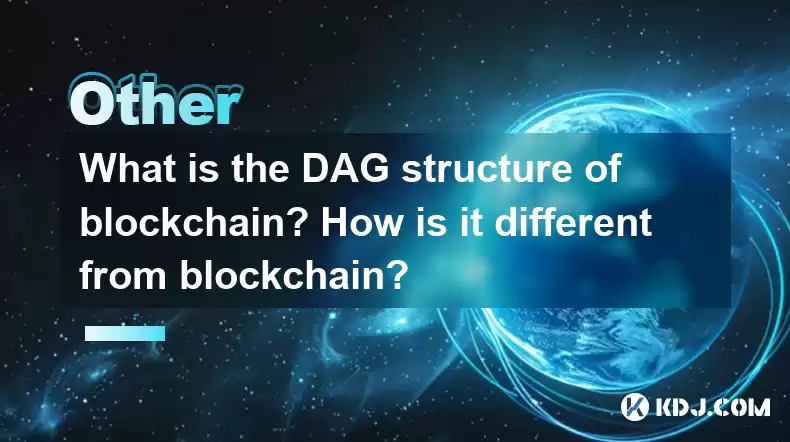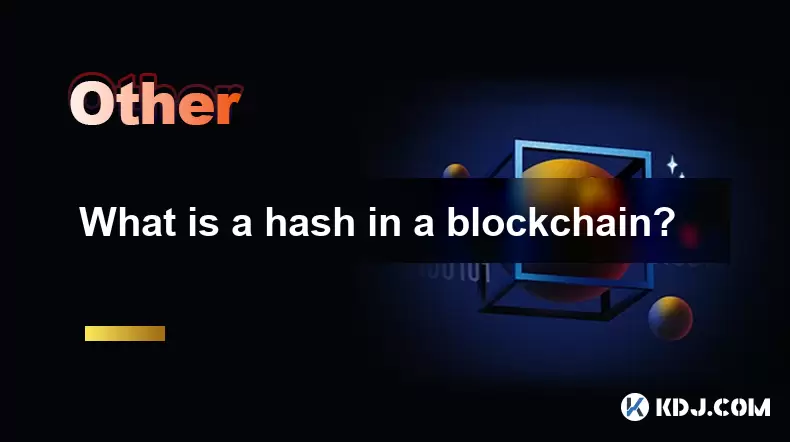-
 Bitcoin
Bitcoin $113900
-1.39% -
 Ethereum
Ethereum $3517
-4.15% -
 XRP
XRP $3.009
1.59% -
 Tether USDt
Tether USDt $0.9997
-0.04% -
 BNB
BNB $766.8
-1.41% -
 Solana
Solana $164.6
-2.38% -
 USDC
USDC $0.9998
-0.02% -
 TRON
TRON $0.3277
0.65% -
 Dogecoin
Dogecoin $0.2023
-1.67% -
 Cardano
Cardano $0.7246
0.05% -
 Hyperliquid
Hyperliquid $38.27
-4.77% -
 Sui
Sui $3.528
-0.52% -
 Stellar
Stellar $0.3890
-0.73% -
 Chainlink
Chainlink $16.16
-2.69% -
 Bitcoin Cash
Bitcoin Cash $539.9
-4.38% -
 Hedera
Hedera $0.2425
-2.00% -
 Avalanche
Avalanche $21.71
-0.97% -
 Toncoin
Toncoin $3.662
5.73% -
 Ethena USDe
Ethena USDe $1.000
-0.02% -
 UNUS SED LEO
UNUS SED LEO $8.964
0.35% -
 Litecoin
Litecoin $107.7
2.33% -
 Shiba Inu
Shiba Inu $0.00001223
-0.40% -
 Polkadot
Polkadot $3.617
-0.97% -
 Uniswap
Uniswap $9.052
-2.49% -
 Monero
Monero $295.1
-3.79% -
 Dai
Dai $0.9999
0.00% -
 Bitget Token
Bitget Token $4.315
-1.85% -
 Pepe
Pepe $0.00001060
0.11% -
 Cronos
Cronos $0.1342
-2.72% -
 Aave
Aave $256.0
-0.87%
What is the DAG structure of blockchain? How is it different from blockchain?
DAGs offer scalable, fast transactions in cryptocurrencies like IOTA and Nano, but face security and adoption challenges compared to traditional blockchains.
Apr 27, 2025 at 08:56 pm

The Directed Acyclic Graph (DAG) structure represents a fascinating alternative to traditional blockchain technology within the cryptocurrency ecosystem. DAG is a type of data structure that is used in several cryptocurrencies to enhance scalability and transaction speed. Unlike traditional blockchains, which rely on a linear chain of blocks, DAGs employ a more complex, interconnected network of transactions. This article delves into the specifics of the DAG structure, its differences from blockchain, and the implications for cryptocurrency operations.
Understanding the DAG Structure
A Directed Acyclic Graph (DAG) is a graph data structure where the edges have a direction and there are no cycles. In the context of cryptocurrencies, each node in the graph represents a transaction, and the directed edges show the flow of value between transactions. The acyclic nature ensures that transactions cannot loop back on themselves, which maintains the integrity and chronological order of the data.
In a DAG-based system, new transactions are not grouped into blocks but are instead added directly to the graph. To add a new transaction, the system typically requires the transaction to reference or validate one or more previous transactions. This process not only adds the new transaction to the graph but also helps to secure the network by confirming the validity of past transactions.
Key Differences Between DAG and Blockchain
The primary difference between DAG and traditional blockchain lies in their structural organization and operational mechanics. Blockchain is a linear chain of blocks, where each block contains multiple transactions and is linked to the previous block via a cryptographic hash. In contrast, DAG is a non-linear structure, allowing multiple transactions to be linked directly to each other without the need for blocks.
Scalability is another significant difference. Traditional blockchains often face scalability issues due to their linear nature, where each block must be processed sequentially. DAGs, on the other hand, can process transactions in parallel, potentially leading to higher transaction throughput and faster confirmation times.
Security mechanisms also differ. In a blockchain, consensus is typically achieved through mechanisms like Proof of Work (PoW) or Proof of Stake (PoS), which require significant computational resources or stake. DAGs often use different consensus methods, such as voting on the validity of transactions by referencing them, which can be less resource-intensive.
Examples of DAG-Based Cryptocurrencies
Several cryptocurrencies have adopted the DAG structure to improve upon traditional blockchain limitations. IOTA uses a DAG called the Tangle, where each new transaction must validate two previous transactions. This approach aims to increase scalability and reduce the need for miners.
Nano is another example, utilizing a DAG structure where each account has its own blockchain, but these are interconnected to form a DAG. This allows for instant transactions and no fees, as each user is responsible for validating their own transactions.
Byteball employs a DAG where transactions are linked in a directed acyclic manner, and consensus is reached through a system called 'witnesses' that periodically vote on the validity of transactions.
Advantages of DAG Over Blockchain
DAG offers several advantages over traditional blockchain. Scalability is one of the most significant benefits, as DAGs can handle a higher volume of transactions per second due to their parallel processing capabilities. This makes DAGs particularly appealing for applications requiring high transaction throughput, such as IoT devices or microtransactions.
Another advantage is reduced transaction fees. Since DAGs often do not require miners or validators in the traditional sense, the costs associated with processing transactions can be lower. This can make DAG-based cryptocurrencies more attractive for everyday transactions.
DAGs also offer faster transaction confirmation times. Because transactions can be processed concurrently, users may experience quicker confirmation of their transactions compared to traditional blockchains, where transactions must wait for the next block to be mined.
Challenges and Considerations
Despite their advantages, DAGs face certain challenges. Security is a primary concern, as the lack of traditional consensus mechanisms can make DAGs more vulnerable to certain types of attacks, such as double-spending. Developers must implement robust security measures to mitigate these risks.
Complexity is another consideration. The non-linear nature of DAGs can make them more difficult to understand and implement compared to the straightforward structure of blockchains. This complexity can pose challenges for developers and users alike.
Adoption is also a hurdle. While DAGs offer promising solutions to scalability and speed, they are less established than traditional blockchains. Gaining widespread adoption and trust within the cryptocurrency community can be a slow process.
Practical Applications of DAG in Cryptocurrencies
DAGs have found practical applications in various cryptocurrency projects. For instance, IOTA is designed to facilitate secure data transfer and payments between IoT devices. Its Tangle structure allows for feeless transactions, making it suitable for microtransactions that are common in IoT ecosystems.
Nano leverages its DAG structure to enable instant, fee-free transactions. This makes it an attractive option for peer-to-peer payments, where speed and cost are critical factors.
Byteball uses its DAG to create a decentralized database that can store and transfer value. This has applications in areas such as smart contracts and digital asset management, where the ability to link transactions in a non-linear fashion can be beneficial.
Frequently Asked Questions
Q: Can DAGs and blockchains be combined in a single cryptocurrency system?
A: Yes, some projects are exploring hybrid models that combine elements of both DAGs and blockchains. For example, a system might use a DAG for transaction processing and a blockchain for achieving consensus and maintaining a ledger. This approach aims to leverage the strengths of both structures.
Q: How does the security of a DAG compare to that of a blockchain?
A: The security of a DAG can differ significantly from that of a blockchain. While blockchains often rely on resource-intensive consensus mechanisms like PoW or PoS, DAGs may use alternative methods such as transaction validation by referencing. This can make DAGs less vulnerable to certain types of attacks but potentially more susceptible to others, such as double-spending. The specific security measures implemented by a DAG-based system are crucial in determining its overall security.
Q: Are there any regulatory challenges specific to DAG-based cryptocurrencies?
A: Regulatory challenges for DAG-based cryptocurrencies can be similar to those faced by traditional blockchains, such as issues related to anti-money laundering (AML) and know-your-customer (KYC) compliance. However, the unique structure and operational mechanics of DAGs might require tailored regulatory approaches, particularly concerning transaction validation and consensus mechanisms.
Q: How can developers get started with implementing a DAG-based cryptocurrency?
A: Developers interested in implementing a DAG-based cryptocurrency should start by studying existing projects like IOTA, Nano, and Byteball to understand different approaches to DAG implementation. They should also consider the following steps:
- Choose a programming language suitable for blockchain and DAG development, such as Rust or C++.
- Design the transaction structure and the rules for linking transactions within the DAG.
- Implement a consensus mechanism that fits the project's goals, such as transaction validation through referencing.
- Test the system thoroughly to ensure it can handle the desired transaction volume and maintain security.
- Engage with the cryptocurrency community to gather feedback and improve the system based on real-world use cases.
Disclaimer:info@kdj.com
The information provided is not trading advice. kdj.com does not assume any responsibility for any investments made based on the information provided in this article. Cryptocurrencies are highly volatile and it is highly recommended that you invest with caution after thorough research!
If you believe that the content used on this website infringes your copyright, please contact us immediately (info@kdj.com) and we will delete it promptly.
- Bitcoin Strategy: Saylor's Not Hoarding, He's Building an Empire
- 2025-08-02 22:30:12
- Bitcoin Bloodbath: Macro Pressures and Liquidations Unleash Crypto Chaos
- 2025-08-02 22:30:12
- Tron, Cold Wallets, and Crypto Trends: What's Hot in the Market?
- 2025-08-02 23:10:12
- Bitcoin's Wild Ride: Davinci, Investors, and the $500K Dream
- 2025-08-02 23:50:12
- Worldcoin, Identity, WLD Price: Decoding the NYC Crypto Buzz
- 2025-08-02 21:10:12
- Shiba Inu: Utility and Community Strength Drive Crypto's Evolution
- 2025-08-02 21:50:12
Related knowledge

What is the difference between on-chain and off-chain transactions?
Aug 02,2025 at 04:22pm
Understanding On-Chain TransactionsOn-chain transactions refer to digital asset transfers that are recorded directly on a blockchain ledger. These tra...

What is the double-spending problem and how does blockchain prevent it?
Aug 02,2025 at 01:07pm
Understanding the Double-Spending ProblemThe double-spending problem is a fundamental challenge in digital currency systems where the same digital tok...

What is the difference between a blockchain and a database?
Aug 01,2025 at 09:36pm
Understanding the Core Structure of a BlockchainA blockchain is a decentralized digital ledger that records data in a series of immutable blocks linke...

How does blockchain handle scalability?
Aug 02,2025 at 02:58pm
Understanding Blockchain Scalability ChallengesBlockchain scalability refers to a network's ability to handle an increasing volume of transactions wit...

What is a hash in a blockchain?
Aug 02,2025 at 05:28am
Understanding the Concept of Hash in BlockchainA hash in the context of blockchain technology refers to a unique digital fingerprint generated by a cr...

What is a hash in a blockchain?
Aug 02,2025 at 04:43am
Understanding the Concept of Hash in BlockchainA hash in the context of blockchain technology refers to a unique digital fingerprint generated by a cr...

What is the difference between on-chain and off-chain transactions?
Aug 02,2025 at 04:22pm
Understanding On-Chain TransactionsOn-chain transactions refer to digital asset transfers that are recorded directly on a blockchain ledger. These tra...

What is the double-spending problem and how does blockchain prevent it?
Aug 02,2025 at 01:07pm
Understanding the Double-Spending ProblemThe double-spending problem is a fundamental challenge in digital currency systems where the same digital tok...

What is the difference between a blockchain and a database?
Aug 01,2025 at 09:36pm
Understanding the Core Structure of a BlockchainA blockchain is a decentralized digital ledger that records data in a series of immutable blocks linke...

How does blockchain handle scalability?
Aug 02,2025 at 02:58pm
Understanding Blockchain Scalability ChallengesBlockchain scalability refers to a network's ability to handle an increasing volume of transactions wit...

What is a hash in a blockchain?
Aug 02,2025 at 05:28am
Understanding the Concept of Hash in BlockchainA hash in the context of blockchain technology refers to a unique digital fingerprint generated by a cr...

What is a hash in a blockchain?
Aug 02,2025 at 04:43am
Understanding the Concept of Hash in BlockchainA hash in the context of blockchain technology refers to a unique digital fingerprint generated by a cr...
See all articles

























































































